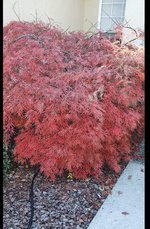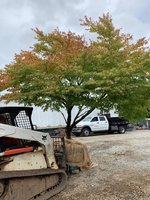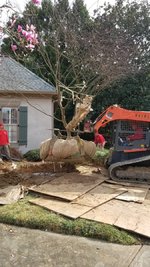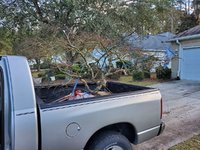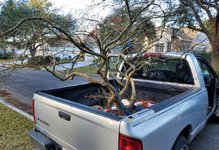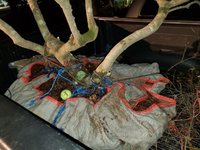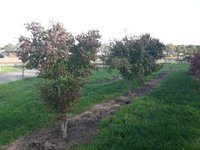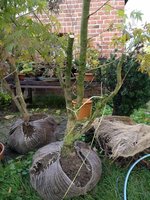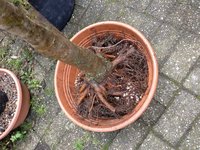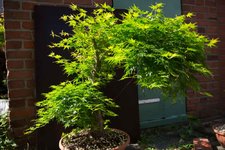In your zone, I doubt you need to worry about protecting the roots. The pot could just sit on the ground and likely be just fine. OR, am I mistaken and that is a shallow round pot not a conventional big black plastic nursery pot that is partially buried? If it is buried, are you sure the pot will drain, buried like that? This can be a good way to drown a tree in a rainy winter.
It would handle being in a bonsai substrate simply because of the air-filled porosity. You likely could have washed away the old soil, effectively doing a full bare root repot. However, the tree would require being rigidly secured to the pot. Else it would easily move around in the pot = a little jostling by the wind or other accidental movement could kill it. With the roots still 'bound' in the soil that they've been in for some time, this isn't as much of a worry. Nevertheless, I'm concerned.
I'm not sure what the difference would be, in your climate, to just do the full bare root repot now as opposed to later in the winter/spring (as buds swell). Roots will grow as long as they are warmer than 40F. Either time, you will need to rigidly secure the tree to the pot of bonsai substrate after the bare rooting. You cannot simply pot it in the pot. Any movement of the tree, by an accidental bump or wind, will move the roots in the substrate and damages the growing root tips - once or twice and it can be fatal.
I really don't see anything securing the tree to the pot in the pix. A few wire guys between the pot lip and the major branches could do the job. There are other ways, of course, but that tree really should be secured to the pot in some fashion, IMHO.
